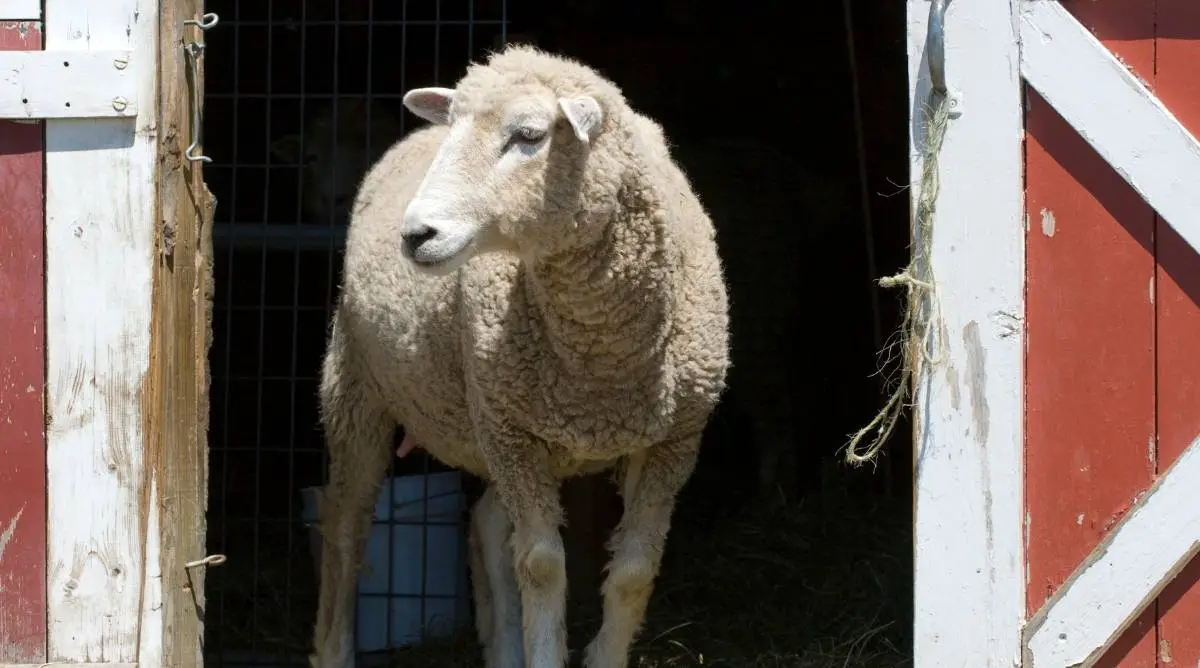Popular sheep housing options include traditional sheep barns, DIY sheep barns, pole barns, sheds, and hoop houses. The best choice depends on your environment and climate, your flock's size, your purpose for rearing sheep, and the lambing system you follow.
Table of Contents
What Kind of Shelter Do Your Sheep Need?
The ideal shelter type for your sheep depends on your flock size, the climate, and lambing needs.
Sheep can survive harsh weather conditions, and they don’t necessarily require sheltering if you live in a warm climate. Still, it’s best to have at least a simple shelter that helps sheep stay out of the rain.
Sheep farmers have a few categories of shelter, including:
- Open shelters: These are more suitable in regions with mild climates. They comprise fenced areas without roofs so the sheep can move around and rest under trees when it’s too hot. An example is constructing windbreaks surrounding a pasture area. This option is cheaper and less labor-intensive. However, it’s not ideal for winter or Fall lambing.
- Semi-open shelters: An open space with a roof and a few walls. The sheep have access to the pasture and can shelter themselves when the weather becomes too harsh for them to remain outdoors. A three-sided sheep shed is an example of a semi-open shelter.
- Confined shelters: These are fully roofed, with well-managed lighting and ventilation facilities. They have more elaborate layouts and can be more expensive than other options. However, they provide the best shelters, especially in harsh climates. Most sheep barns and pole barns fall in this category of confined shelters.
What Types of Sheep Housing are There?
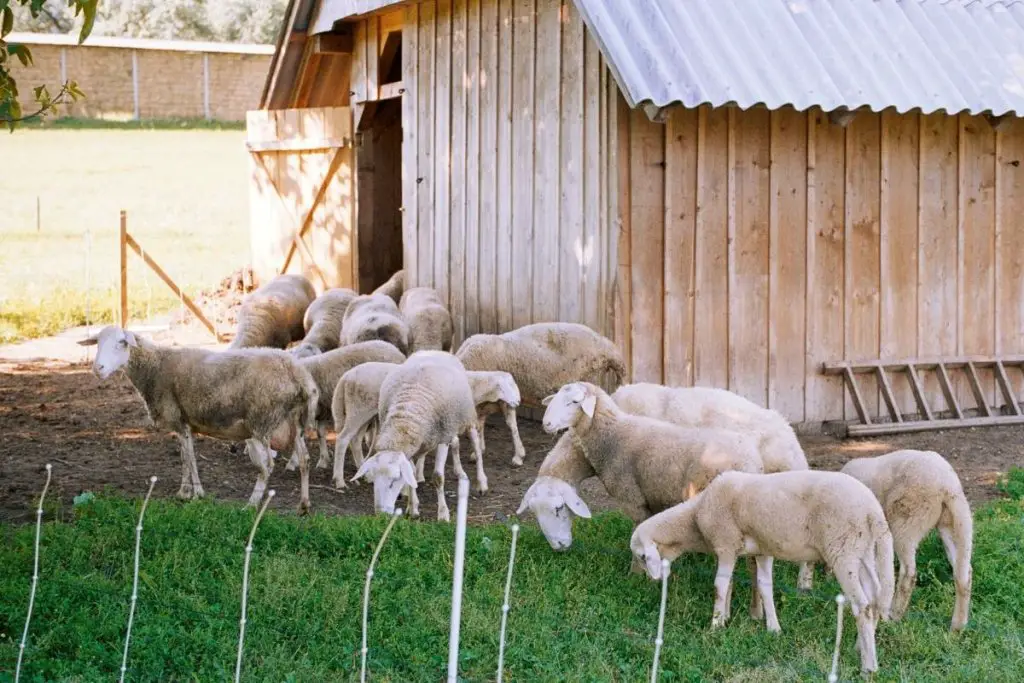
Sheep housing options include traditional sheep barns, sheep sheds, pole barns, hoop houses, and metal buildings.
Traditional Sheep Barn
A sheep barn is a complete wooden structure with doors and ventilation. It typically has hay storage areas, lambing pens, jugs, and feeding areas.
While you can build a sheep barn from scratch, this can be expensive and tedious. You can also purchase a do-it-yourself barn kit and quickly create a small barn for your sheep.
DIY Sheep Barn Kits
A DIY barn kit is a construction set containing all the pieces, materials, and parts needed to build a barn.
Barn kits come in handy when you have limited space, labor, and capital to construct a barn for your sheep. Most barn kits are affordable, easy to set up, and ideal for novice farmers with small flocks.
Barn kits are also portable, so you can move them onto different sections of land later.
DIY barn kits are available in online stores and home improvement retailers like Home Depot.
A good example is the Roanoke 16 ft. x 28 ft. Wood Storage Building (available at Home Depot). This barn kit is a wooden 2-story building with the typical gambrel roof design. The kit comes with pre-cut trusses, and pre-built gable ends. You may still have to do some cutting before assembling the structure.
Pole Barn
A pole barn is a sturdy structure built using metal or wooden poles with cross beams.
The posts are dug a few feet into the ground, securing the building.
Building a pole barn is more economical than a sheep barn because it uses fewer materials. It’s also easier to construct.
Pole barns have better ventilation than traditional barns and are easier to clean.
Sheep Shed
A sheep shed is a simple single-story structure, typically rectangular or U-shaped and partitioned into various sections.
For easy management, it’s common to have separate pens within a sheep shed for sheep of different sexes, ages, or health conditions.
Sheep sheds can vary greatly depending on the scale of the farm. Small sheep farms have simple sheep sheds with perhaps just a couple of pens. Commercial farm sheep sheds are large and have ventilation, automatic waterers, and mechanized feed distribution and manure collection.
Hoop Houses and Fabric Buildings
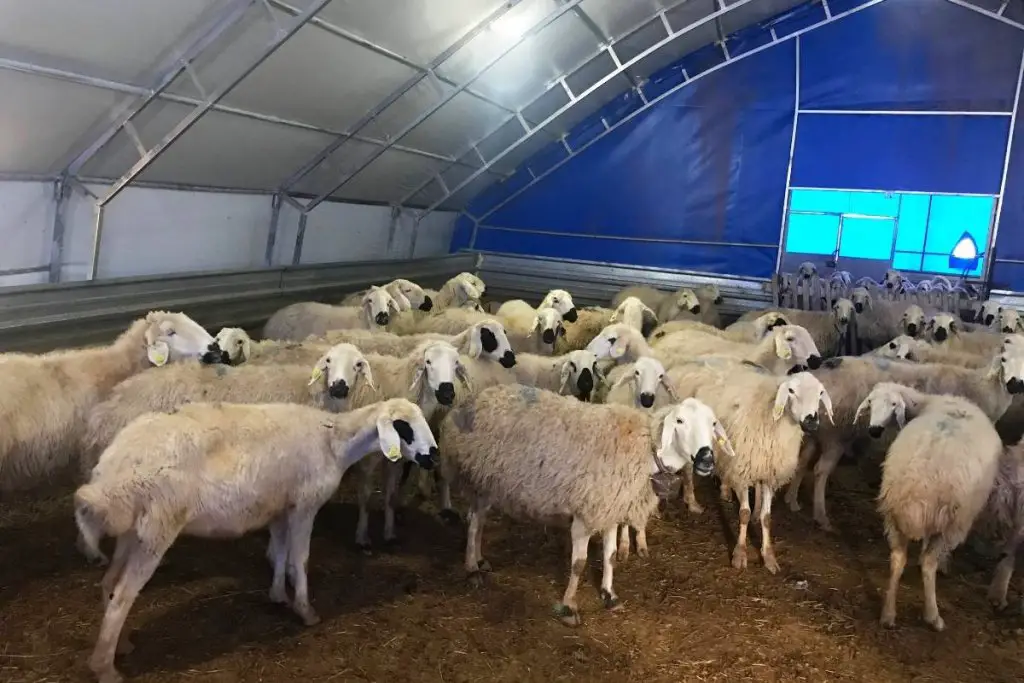
A hoop house is a greenhouse-like structure. It’s built using an arched metal frame with heavy fabric atop the frame.
A hoop house can last a long time. You may only need to change the fabric covering when it wears out (this can take up to 15 years).
Compared to traditional barns and pole barns, hoop structures are more cost-effective and easier to set up and maintain.
Many sheep producers are shifting to hoop houses and fabric buildings because they provide more fresh air, lighting, and space. They’re also easy to install and disassemble.
Fabric buildings are versatile and protect sheep from weather elements. They also offer natural light, fresh air, and ventilation, ensuring that sheep are safe from respiratory complications.
Fabric buildings have ample interior spaces, and can be easily subdivided to suit your flock’s needs.
Accessories you can utilize to customize your sheep shelter include:
- Different door styles and sizes
- Gating and penning systems
- Retractable curtains
- Feeding bunks
- Chimneys
What are the Requirements for a Sheep Barn?
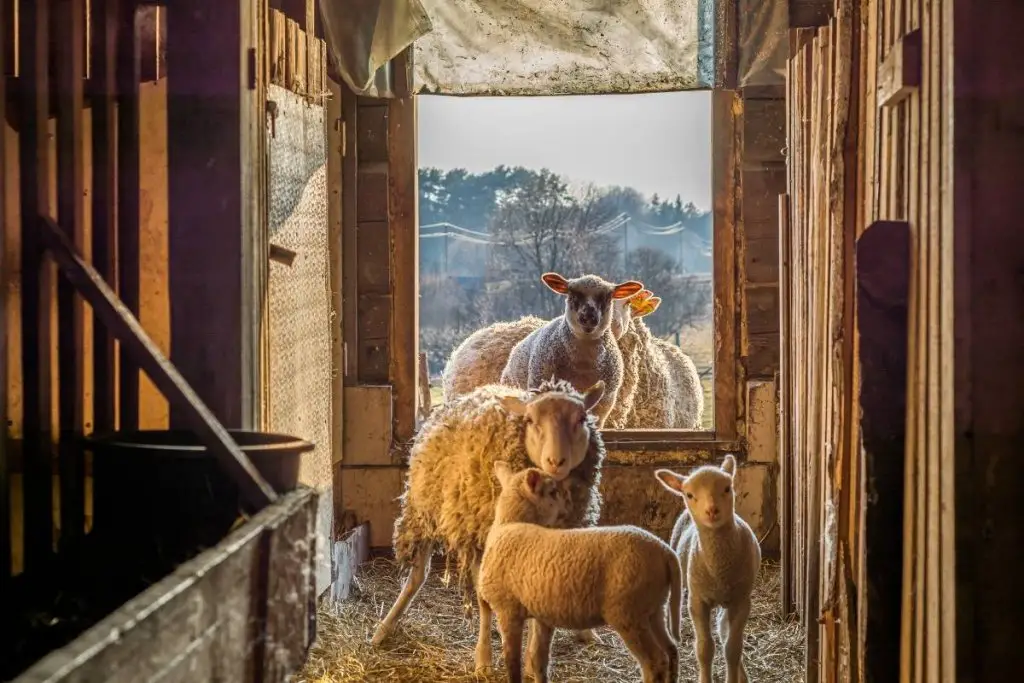
The basic requirements for a sheep barn are a space and ventilation. In addition, it must contain essential features to keep the sheep comfortable, facilitate feeding, and protect the flock from weather elements and predators.
Below are the requirements of a typical sheep barn:
- Size: The sheep barn size depends on how large your flock is. For example, a small barn (about 12′ by 20′) is ideal if you’re a novice in sheep farming and only have a few sheep to start with.
- Space: A sheep barn should be spacious enough to avoid overcrowding since it makes cleaning difficult and triggers health issues. The spacing depends on the sheep’s age and other factors. For instance, pregnant ewes require 1.2-2.4 square meters of space, while ewes with lambs need 2.2 square meters.
- Lambing pens: These are enclosed pens (about 16-25 square feet) inside a sheep barn where ewes bond with their lambs 2-3 days after delivery. Later, you can move the ewes and their lambs into group pens.
- Hay storage: It’s essential to save some space (preferably a loft) inside your sheep barn for hay storage. Keeping your hay inside the barn protects it from the elements and preserves its quality.
- Troughs: Every sheep barn should have a consistent water supply. You can use water troughs where your flock will access fresh water whenever they need a drink. Make sure you put up a barrier to prevent lambs from jumping into the troughs. Alternatively, go for automatic waterers to avoid the hassle of refilling troughs.
- Mineral feeder: Minerals are a vital part of the sheep’s diet. Make sure to install several mineral feeders where your sheep can access them easily.
- Lambing jugs: These are portable pens where pregnant ewes give birth to their young ones. Lambing jugs usually contain heaters to protect the lambs from developing hypothermia after birth. These structures keep the ewe and her lambs separate but close to the rest of the flock.
- Lighting: Ample lighting is vital in every sheep barn. Install durable lights to illuminate your sheep’s shelter. You can go for fluorescent strips, 60+ watt bulbs, or any other long-lasting bulbs.
- Easy access: A sheep barn needs to be easily accessible. Most are constructed with huge double doors, as they allow free entrance and exit.
Sheep Barn Layouts
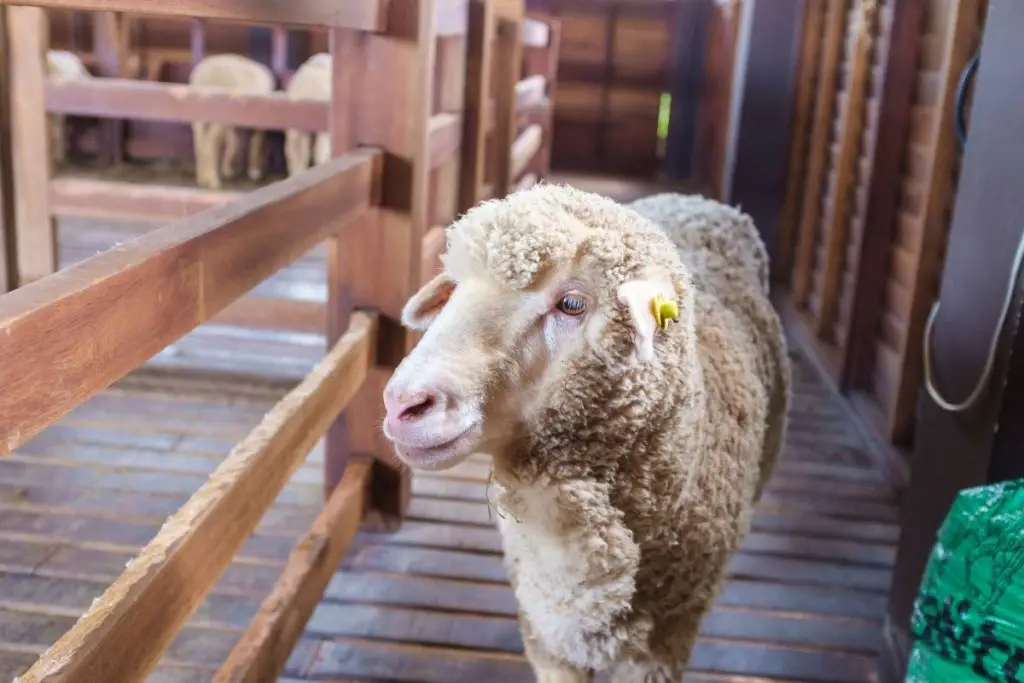
Numerous sheep barn layouts exist. Finding a design that works for you depends on the size of your flock, your budget, and the labor you have available to build the barn.
A typical barn layout comprises a sturdy structure constructed on an elevated area. It can be a one or two-story building. Many sheep barns are rectangular or L-shaped with sub-divided floor areas.
The sheep barn design should maximize the available space, ensuring adequate feed and floor space. The exit shouldn’t face the direction of prevailing winds to protect the sheep from weather elements.
Here’s what to keep in mind when designing your sheep barn layout:
- The layout should accommodate the size of your flock.
- Sheep require well-lit and well-ventilated spaces.
- Sheep gravitate toward flat areas.
- Sheep willingly move towards exits (open areas) rather than dead ends.
- Keep in mind your budget and the labor you have available when considering barn layouts. Some are easier and cheaper to put together than others.
- Your design should accommodate facilities such as shearing, handling, storage, and treatment areas.

